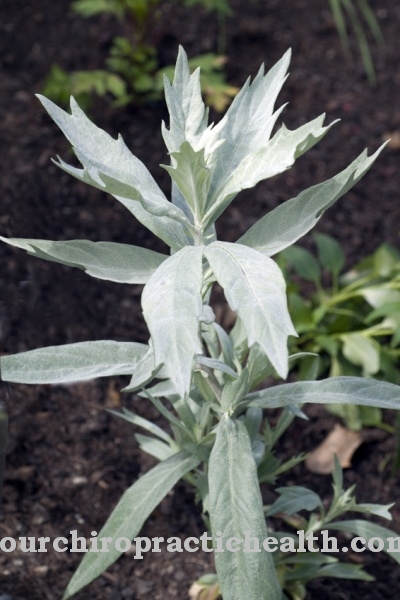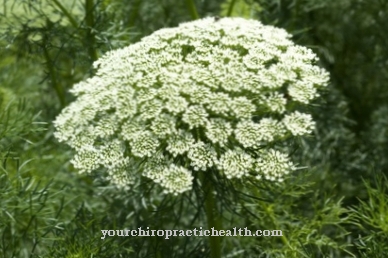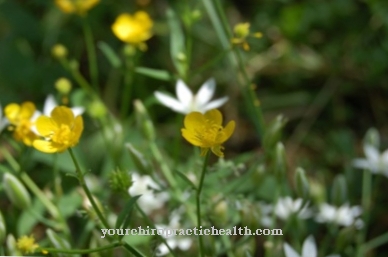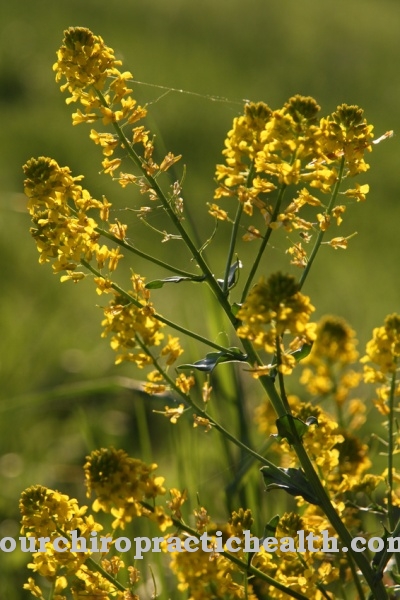Occurrence and cultivation of the oak-leaved poison sumac

Oak-leaved poison sumac is deciduous and has large, flexible branches. The milky sap of poison sumac is white-yellow, but turns black on contact with the air and gives off a foul smelling odor. The foliage leaves of the poison ivy are divided into petioles and blades and arranged alternately on the branches. The stem of a leaf is up to 15 centimeters long, the blade is downy hairy and has a serrated edge. The color of the leaves varies depending on the season. It can be purple, bright red, or shiny green.
The inflorescence of the plant is panicley and lateral. The flowers themselves are unisexual and have a whitish to green color with a red center. In addition, poison sumac has spherical stone fruits that are about the size of a pea and 4 to 8 millimeters in size. The flowering period is from May to July. Their distribution area extends from Canada to British Columbia. Poison sumac is also found in Arizona and Florida, but is also found in Mexico, Northeast Asia, the Bahamas and in humid regions of France.
In Germany, the plant is mainly found in botanical gardens - less often in home gardens. The plant will in most cases trigger an itchy rash to the touch. The ingredient urushiol is responsible for this.
Effect & application
In addition to urushiol, poison sumac contains tannins, gallic tannic acid and glycosides. Rhus tannic acid and fisetin are also used. Urushiol is one of the most powerful natural contact allergens. Quantities in the microgram range are sufficient to cause severe irritation. In addition to external, allergic reactions, vomiting, colic, blood in the urine and inflammation of the digestive organs can occur when taken orally. Neurological symptoms similar to atropine poisoning can also occur.
According to reports, the plant is said to trigger rheumatism and, in the case of a contact allergy, lead to crusty blisters, severe itching, hot and weeping eczema, and fever. In homeopathy, however, the plant is used in small quantities against various ailments. It is used in the form of drops, tablets, creams, gels and injection solutions. But poison sumac is also found in various mixtures.
The hairy leaves are mainly used. But the fresh shoots of poison sumac are also processed. Among other things, they are used as pain relievers (analgesics). In homeopathic terms it can be found in the potencies D6-12 and D30. Low potencies are effective against physical ailments, while high potencies combat mental illness.
Importance for health, treatment & prevention
Despite its toxicity, poison sumac is used against all kinds of ailments. These include sprains, sprains, or bruises that are associated with swollen joints and cause pulling pain when moving. It is also used as a pain reliever against strained tendons or tendinitis - complaints that are usually aggravated by cold and wet.
It looks similar with rheumatism, lumbago, sore muscles and neck pain, which often worsen in cold, wet weather. Poison sumac is also used here. Another area of application is the impairment of the psyche. Poison oak is used in restlessness caused by fears and worries. It is also used for cold sores and conjunctivitis.
In addition to a whole range of areas of application associated with joint and bone pain, the plant can also be used for mild flu and cold symptoms, provided they are associated with pain in the limbs. Here, too, the plant has an effect as a pain reliever.
During pregnancy, poison sumac is used for acute pain in the lumbar spine caused by pressure from the baby. This can prevent inflammation of the sciatic nerve. Ischalgia is treated, for example, by taking the potency D12 five times a day, the amount being reduced after two days. Herpes is treated with D30, the further course of which depends on the severity of the symptoms.
This application should be used especially when the blisters have not yet formed, but an initial tingling sensation can be felt. If the vesicles have already formed, the potency is reduced to D6 or D12 and started with five globules three times a day. This treatment should usually be continued until completely healed to avoid relapses.
While the plant is still used quite often in homeopathy, it is hardly or not at all used in conventional medicine. There are now far more useful drugs for various ailments. In addition, there is the controversial use of poisonous plants in medicine. Basically, they should always be consumed with caution and only in very small amounts.




























